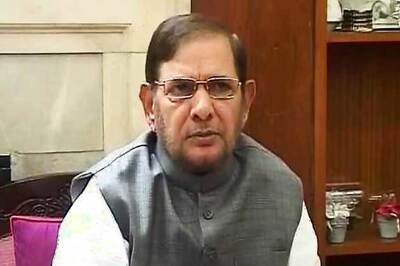
views
Teaching Primary or Secondary School

Determine which level you’d like to teach. The nursery includes the kindergarten stage covering LKG (Lower Kindergarten) and UKG (Upper Kindergarten). Primary schools cover the 1st through 8th grades (ages 6-14). Secondary schools teach students in the 9th and 10th grades (ages 14-16), and senior secondary schools teach students in the 11th and 12th grades (ages 16-18). You should opt for the age group that you find most appealing. However, keep in mind that the higher the age level, the more stringent the qualifications since you’ll be teaching more advanced and specialized courses.

Decide which subject you’d like to teach. Early primary school teachers do not need to specialize. If you would prefer to instruct in a specific field, you’ll need a Bachelor’s Degree in a relevant subject. Primary school subjects include reading, writing, arithmetic, social science, science, and English. Secondary school subjects include Hindi, English, foreign languages, math, science and technology, history, geography, civics, art, physical education, and health. They also offer elective vocational training and music.

Get an appropriate teaching degree. There are three levels of teaching degrees: a Diploma, Bachelor’s, and Master’s in Education. If you would like teach primary school, you will need a minimum of a Diploma (D.Ted.). If you would like to teach secondary school, you’ll need a minimum of a Bachelor’s (B.Ed.). A Master’s (M.Ed.) is usually only required for specialized subjects or promotions. The D.Ted. and B.Ed. programs are generally two years. M.Ed. programs are usually one year. Keep in mind that each degree program has different qualifications. To enter a D.Ted., you’ll need to have passed the 12th standard (graduated from senior secondary school) with the minimum qualification. You’re required to have a Bachelor’s of Arts or Sciences (B.A. or B.S.) to enroll in a B.Ed. course. Having a B.Ed. is a prerequisite for getting an M.Ed.

Decide between private and public education. Becoming a teacher at a private school is generally easier because there are many openings and fewer necessary qualifications. Government-run schools are much more closely regulated and require specific eligibility testing and teacher education. However, public schools generally come with better pay and benefits and have more opportunities for career advancement. The types of students are also generally different between public and private schools. Since students must pay to go to private schools, they generally come from more educated households with higher incomes and are therefore better prepared for scholastic achievement.

Pass a qualifying exam. Teacher recruitment in India at the primary and secondary levels is tied to state and national eligibility testing. You must pass the Central Teacher Eligibility Test (CTET) to qualify to teach in a government-owned school and some private institutions. The National Council for Teacher Education (NCTE) offers preparatory curriculums for the exam and determines the minimum eligibility requirements for each year.

Look for teach abroad programs. If you’re a foreign national, there are international organizations that facilitate temporary teaching assignments in Indian schools. Most often, this work is voluntary, minimally paid, or remunerated only in terms of covering travel and living expenses. Many governmental organizations, like the British Council, have teach abroad programs. Go Overseas also has a searchable index of current teach abroad opportunities that is searchable by country and job category: https://www.gooverseas.com/teaching-jobs-abroad
Teaching Higher Education

Get the relevant degree(s). India’s University Grants Commission sets regulations for higher education, including essential qualifications for university professors. Incoming assistant professors will need at least a Master’s Degree or equivalent in a relevant subject from an accredited Indian or foreign university. Your application will be stronger if you have a Doctoral Degree. Keep in mind that you will not be able to advance through promotion from an assistant to an associate professor without getting a PhD.

Ensure you have a good academic record. Besides having a degree, you will need to submit transcripts that prove your marks or grades are above average. Indian universities will judge your record according to the evaluation standards set by your degree-granting university.

Secure academic publications. While assistant professor positions usually do not require a minimum number of publications, your application will be stronger if you have a record of original research in your field. Submit articles to peer-reviewed journals and book proposals to academic publishers in order to show that your work has been vetted by fellow scholars. In order to secure promotions, you will need to hit a minimum number of qualifying academic publications (5 for associates, 10 for full professors), so you might as well start early!

Take the necessary test. If you only have a Master’s Degree, you will need to pass a qualifying exam in order to teach at an Indian university. You can either take the University Grants Commission’s National Eligibility Test (NET) or one of the UGC’s approved equivalent exams, such as the SLET/SET (the State Eligibility Test for the appropriate region in which the university is located). If you have a qualifying PhD, you are exempt from having to take an eligibility test.

Search for faculty positions. You can look for job openings through specific university websites or search for comprehensive listings at dedicated academic job sites, like IndianFaculty.com. Each opening will include information about the associated duties, necessary requirements, and application process for the job. Be sure that a position aligns with your needs and qualifications before applying.
Teaching English as a Second Language

Research teach abroad programs. India’s economy is growing, and the demand for English teachers is growing with it. There are ESL positions available to foreign nationals in nonprofits, primary schools, language schools, international schools, and companies. The advantage of finding a position through an established program is that they’ll help arrange visas, housing, travel, and other logistics for you. Be sure to read reviews of programs so that you can make an informed decision about whether or not they’re right for you and so that you don’t have any unpleasant surprises. If no reviews are available online, ask the program for contact information for current or past participants. If you’d like to stay in India, remember that you can always find another ESL gig while you’re completing your first temporary assignment through a program.

Take location into consideration. India’s a big country. You may want to search for programs in a specific city or region based on its culture, geography, and/or climate. At the very least, you should decide whether you’d prefer a rural or urban teaching situation. Nearly 70% of Indians still live in rural villages, where the need for education is greatest. In general, rural communities have less developed infrastructures for transportation, communication, utilities, and sanitation. Therefore, the overall standards of living are lower. Literacy rates tend to be lower and poverty rates higher in rural locales. You should also look into the accommodations offered by each program. Check to see if room and board are included and what sorts of living conditions you can expect.

Decide on a timeline. Each program will have a different duration, ranging from weeks to a year or more. Figuring out how long you’d like to commit to ESL teaching in India can help you select an appropriate program. If you have a finite amount of time or are worried about whether or not you’ll like it, go for a short-term program. You can also sign on for another program once you’ve given it a trial run.

Pick a teaching level. Would you like to teach kids or adults, students or professionals? Think about which age groups and experience levels that you would like to be instructing. Remember, if you would like to teach at higher levels or in more professional contexts, it’s likely that you’ll need specific credentials first. Be sure to check if your program has any prerequisites in terms of education or certifications. Also, look into the teaching resources and support offered by each program.

Decide if you’re looking for a volunteer or paid gig. Most teach abroad programs in India are voluntary. If you’re looking for a short-term, enriching experience, then doing a volunteer teaching program might be right for you. If you’re looking for a longer term assignment that will provide you with a basic income, focus on paid opportunities. Popular volunteer programs include Teaching Volunteer Project India, Global Citizen Year, Semester Abroad, WorldTeach India, and Asian College of Teachers. If you’d like to find a paid position, you can find current listings at job sites like Craigslist India, Monster India, or Dave ESL Cafe. Because English is an official language in India, most paid ESL positions do not come with large salaries. The average pay is 10,000-15,000 rupees per month plus accommodation. This is enough to live off of comfortably and go on occasional holidays.

Determine your eligibility. At a minimum, most ESL teaching positions and programs require a Bachelor’s Degree in any subject from an accredited university and a valid passport. You may also need to get a teaching certification and/or a visa. Be sure that you can fulfill the basic qualifications before you apply. ESL teaching certifications are generally short, post-baccalaureate programs. They are available in most countries and online and qualify you to teach English as a foreign language around the world.

Consider getting a TESOL certification. Not all programs require you to take a qualifying Teaching-English-to-Speakers-of-Other-Languages course and exam. However, doing so will make you a more attractive applicant and qualify you for a wider range of teaching gigs. Most countries have TESOL (Teaching English to Speakers of Other Languages), TESL (Teaching English as a Second Language), and/or TEFL (Teaching English as a Foreign Language) programs available. You can take courses online or in-person in as little as four weeks. Many teach abroad programs in India offer TESOL/TEFL courses and certification as part of the program. Go Overseas has a database of reviews for qualifying courses to teach abroad: https://www.gooverseas.com/tefl-courses Companies and language schools often require or strongly prefer certified teachers.




















Comments
0 comment